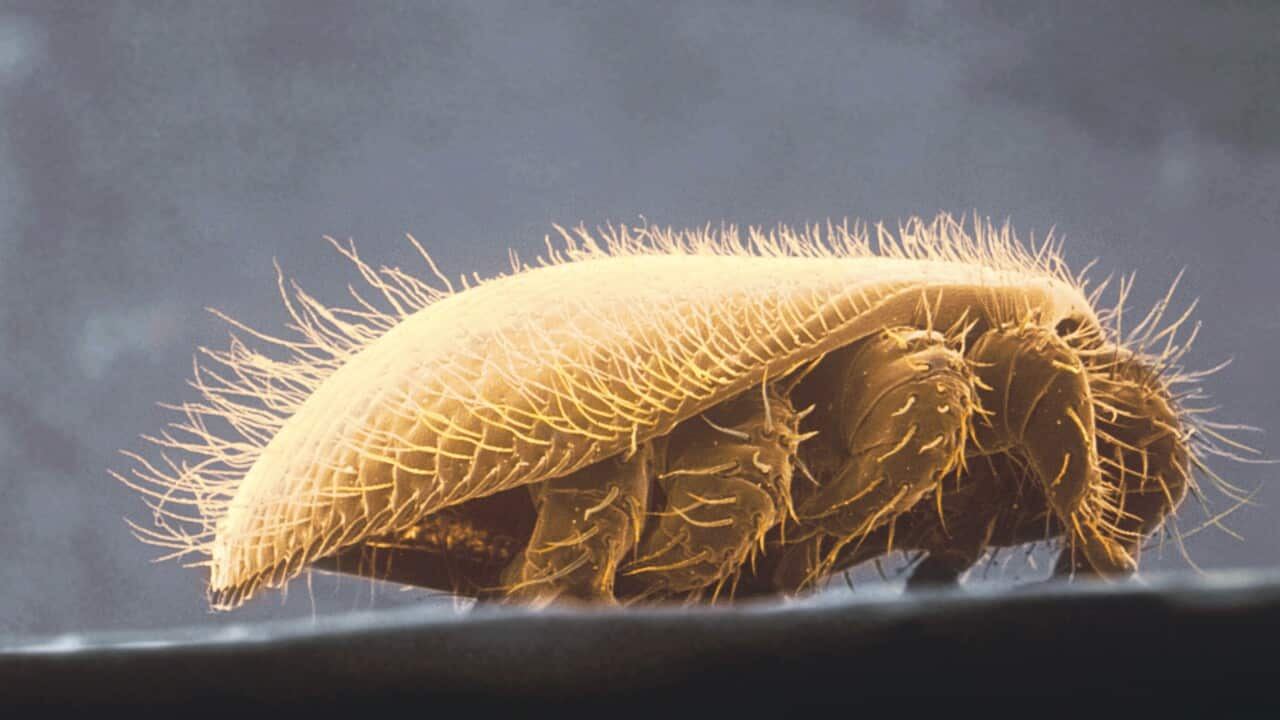The deadly varroa mite has spread undetected across NSW bee colonies for more than eight months, pushing the industry to swap its eradication strategy for suppression amid warnings of significant population losses.
The invasive mite was first detected near the Port of Newcastle in June 2022.
Despite a $100 million effort to eliminate the pest and more than 30,000 hives euthanised over the past 14 months, scientific data and advice suggest the strategy is no longer workable.

A Varroa mite on a honeybee pupa. Credit: Denis Anderson / PR Image
Eradication strategy 'unviable'
The National Management Group, which manages the spread of varroa mite, made a unanimous decision to transition its approach from eradication to managing the biosecurity issue.
It said the eradication strategy was made unviable by some keepers moving bees in containment zones, and a spike in detections across a wider area, pushing control teams to the limit.
A significant outbreak at Kempsey on the mid-north coast was the final straw after tracing failed to detect the pest in some hives for at least eight months, NSW Department of Primary Industries director-general Scott Hansen said on Wednesday.
"That has allowed the mite to spread faster and further than what tracing has been able to keep up with," he said.
READ MORE

What happens if our bees get sick?
Efforts to suppress spread of varroa mite
An emergency order will split NSW into two zones as the state begins its next phase in the fight against varroa.
Hives within the Kempsey and Hunter regions will be placed under the management zone while a suppression zone will be set up for the rest of NSW.
Free movement will be allowed for hives within the management zone while those in the suppression zone will require a movement declaration.

Beekeepers will have to learn to live with varroa mite. Source: AP / Julio Cortez / AP
"Without eradication, we will be doing our best to suppress the spread," Mr Hansen said.
"We are expecting it to continue to spread, however, across the countryside."
The department will engage with industry stakeholders to provide education and management tools to beekeepers with the intention of suppressing the spread into other jurisdictions and building resilience.
Australian Honey Bee Council chief executive Danny Le Feuvre said he was disappointed the mite couldn't be eradicated despite the emotional and financial sacrifice made by the industry.
Keepers are facing the prospect of colony losses as the mite spreads.

A Varroa mite mother and its offspring inside a bee colony. Credit: Denis Anderson / PR Image
"In other countries where they are managing it, significant colony losses have become the norm in their beekeeping operations," Mr Le Feuvre said.
But he supported the shift in approach after 20 per cent of NSW hives in containment zones were in line to be euthanised before the change.
"If we were to continue down that path, it would have killed the industry," he said.
Crop Pollination Association of Australia secretary Steve Fuller welcomed the call, telling AAP the decision to move to a management approach should have happened sooner.

